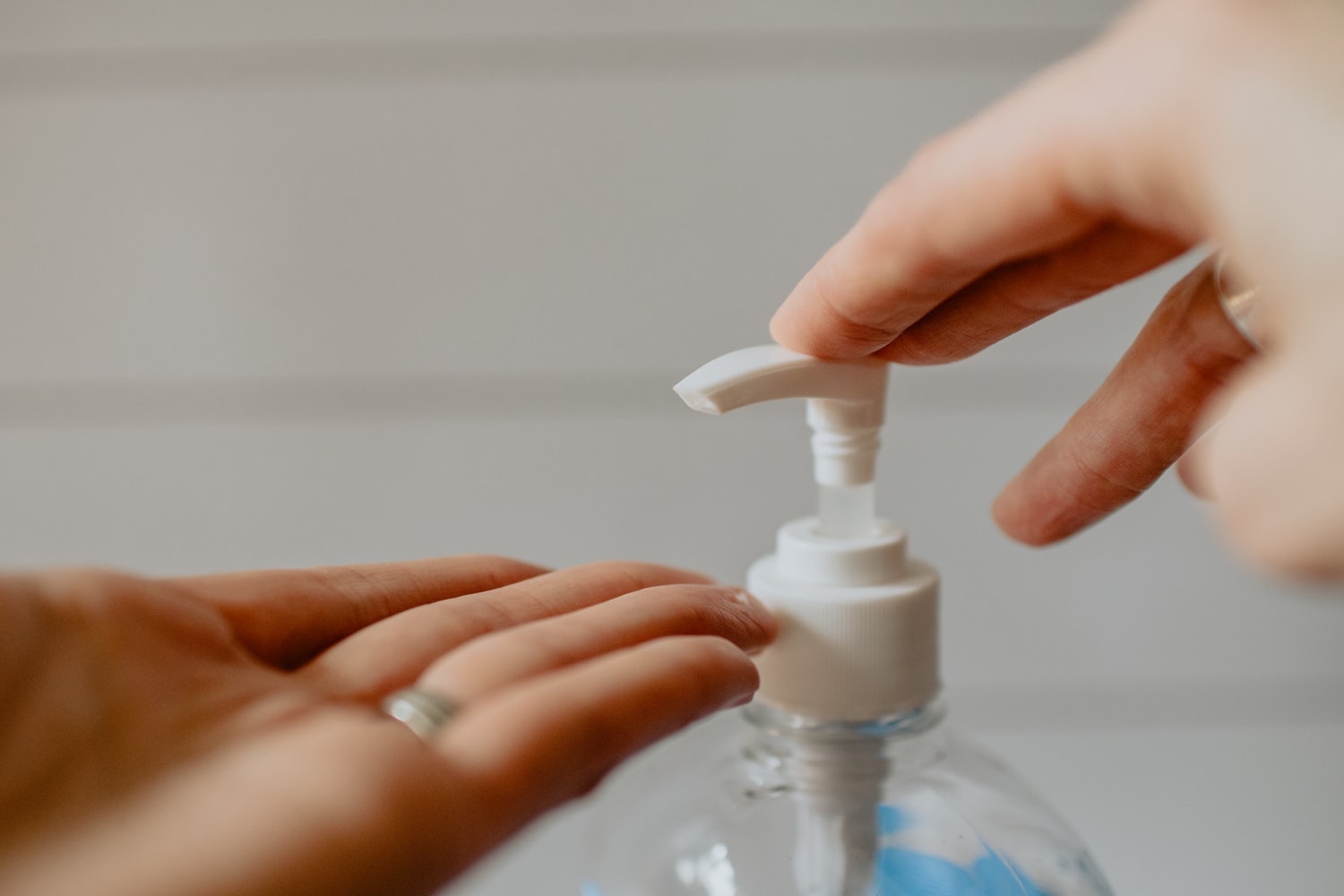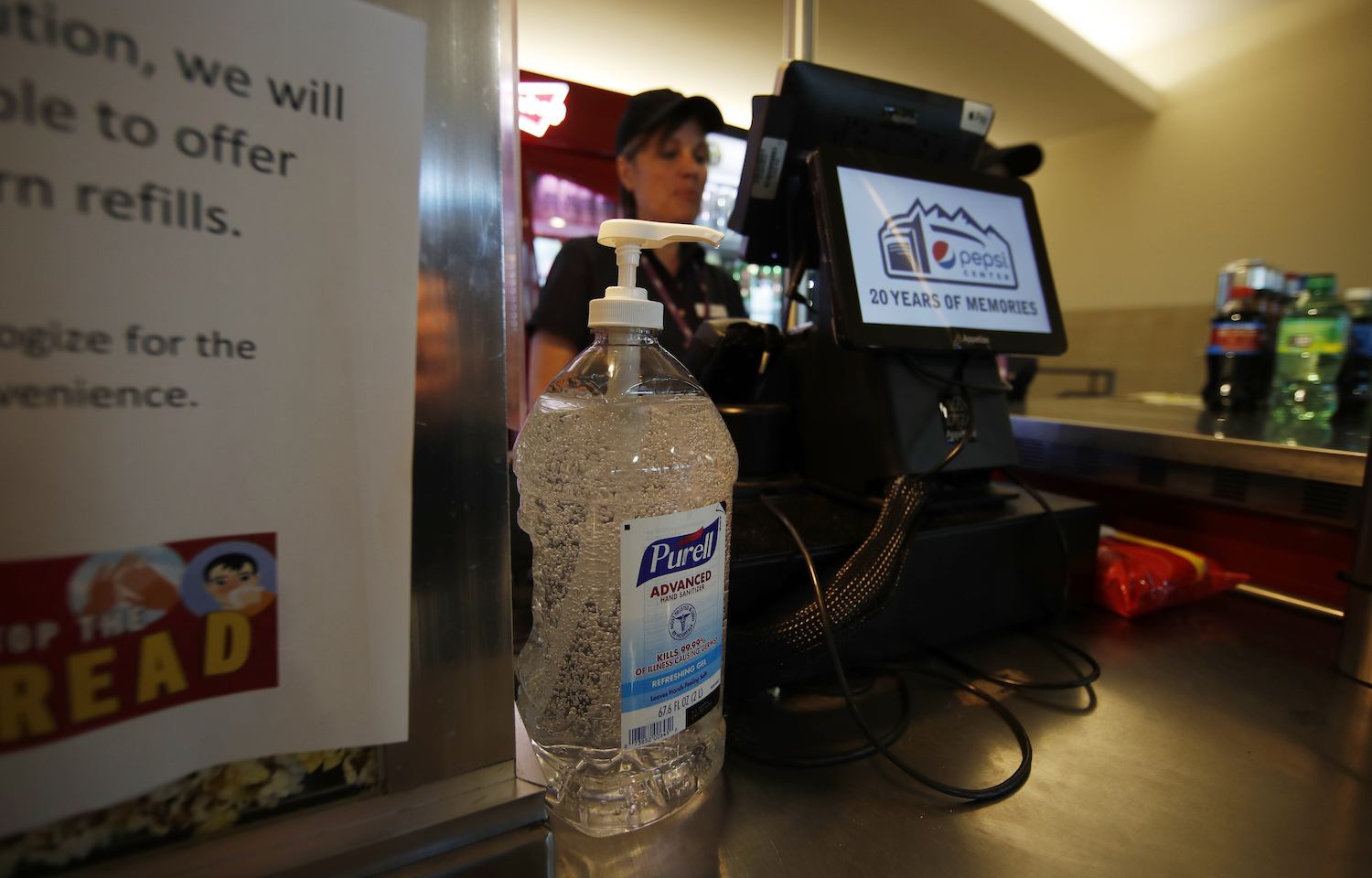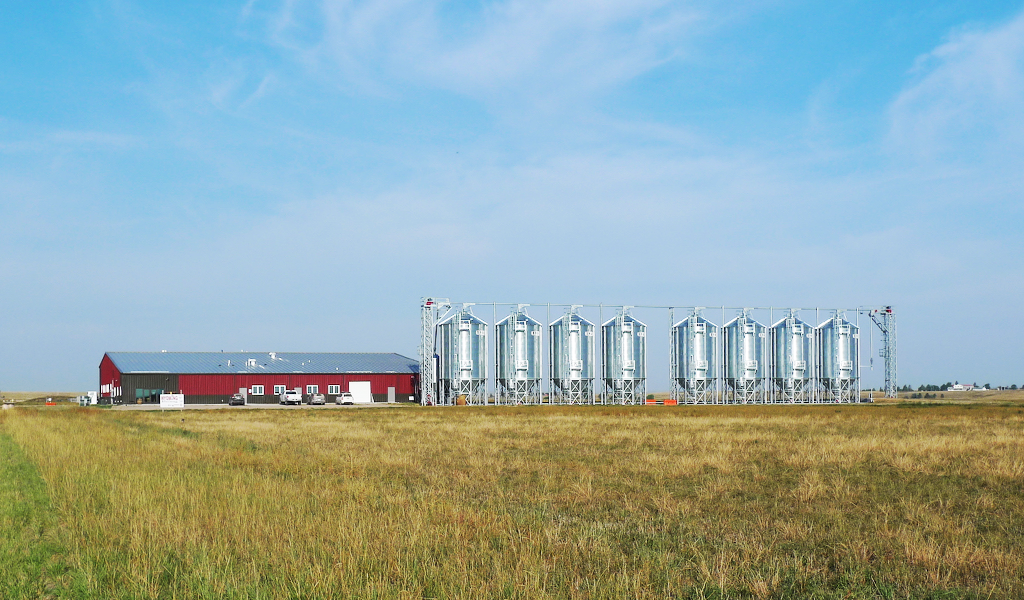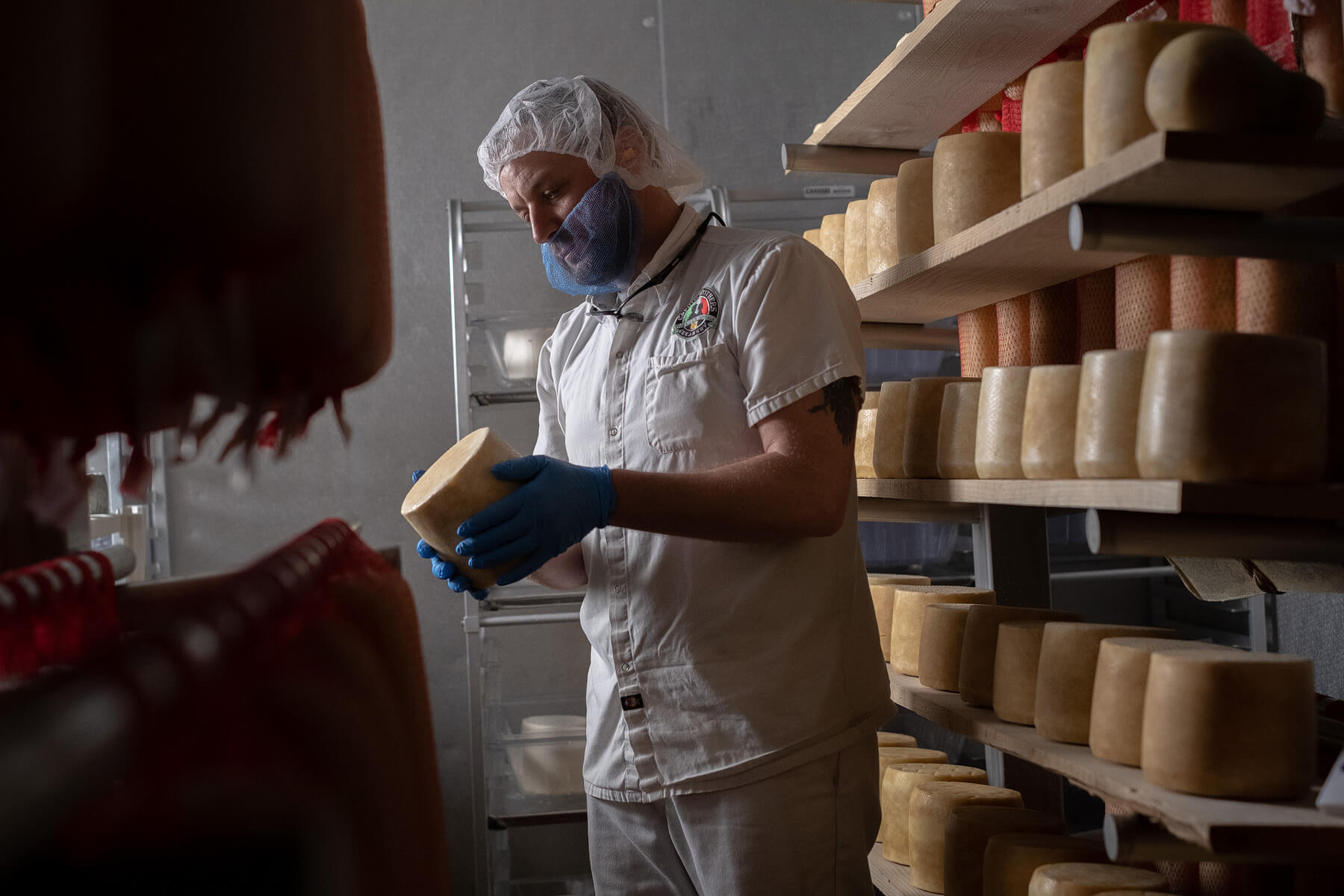Turning spirits into “denatured” alcohol requires expensive ingredients that are vulnerable to price-gouging.
On March 2, Seattle distiller Skip Tognetti made a joke on Twitter: “Looking at the run on Purell and remembering that I’ve got hundreds of gallons of 190-proof ethanol sitting around. Is this what the kids call a ‘pivot’?” The first recorded novel coronavirus death in the United States had been announced two days earlier and Americans were snapping up hand sanitizer to try and ward off the disease. On March 12, one day after the World Health Organization (WHO) declared the spread of Covid-19 a pandemic, Tognetti retweeted his original statement, adding, “I made this joke 10 days ago but maybe now it’s not a joke?”
Within days, the entire distilling industry would be upended as it shifted from making potable alcohol to producing mass quantities of alcohol-based hand sanitizer for hospitals, nursing homes, first responders, and other populations and locations particularly vulnerable to the virus.
“We basically created new businesses in a week,” Tognetti said. His distillery, Letterpress, completed its first batch of sanitizer on March 27, less than a month after his initial tweet. “We’re learning new regulations and sourcing new ingredients that are very, very scarce.”
The complication facing many distillers is denaturing, or rendering the base alcohol unfit for human consumption.
But some critics, including legislators and industry leaders, say the distilleries’ emergency efforts to create hand sanitizer needed by healthcare workers and the public are being hampered by federal rules requiring the products be mixed with costly chemicals to make it unpalatable. Otherwise, they face an excise tax that many distillers can’t afford.
In terms of production, sanitizer is fairly simple to make. All that’s required is the combination and agitation of high-proof alcohol, glycerin, and hydrogen peroxide. Distilleries already have the large, non-reactive tanks and the base alcohol needed to produce the sanitizer in bulk. Many also recognized the opportunity to be of service to the public and hopefully generate enough revenue to stay afloat through the economic turmoil created by the pandemic.
“At the end of the day, we’re pricing this stuff darn close to cost,” said Topher Mallory of Split Rock Distilling in Maine. “For us, it’s about keeping our employees in jobs because three or four weeks ago it was looking pretty ominous. And if you have to push an employee towards being furloughed or on unemployment, that’s just not a livable wage.”
The complication facing many distillers is that of denaturing, or rendering the base alcohol unfit for consumption. The Food and Drug Administration (FDA) requires that alcohol used for sanitizer production be denatured through the use of additives that give it a quality, such as extreme bitterness, to discourage people from drinking it.
“Sourcing the denaturant has really become the obstacle.”
Under normal circumstances, this regulation does not cause any problems, since typically the companies that produce alcohol for drinking and those that produce it for other purposes are separate. Because of the pandemic, this rule is causing serious problems.
The most common and widely available denaturant, isopropyl alcohol, has shot up in price due to increased demand, adding to production costs for small distilleries, which already operate on razor-thin margins.
Additionally, distilled spirits that are intended for consumption are taxed at a much higher rate than alcohol-based products that have been denatured, such as sanitizer or camping-stove fuel. This additional excise tax can be upwards of $8 per gallon, potentially either driving up the cost of producing the sanitizer or forcing the distilleries to operate at a loss if they can’t find a reliable, fairly priced source for denaturant.
“Either the distilleries were in trouble or the consumer could be using a product that wouldn’t be good for human health.”
“Sourcing the denaturant has really become the obstacle,” Tognetti said. “When you start a business in a short time like this and everybody’s got regulations coming at you and you’re trying to figure out what you’re doing and also trying to source ingredients, it’s very confusing.”
For distillers producing sanitizer, the $2-trillion federal stimulus package signed into law on March 27 attempted to address the taxation issue by including a provision waiving the excise tax for alcohol used in sanitizer production through January 1, 2021. However, it also included the provision that production must adhere to FDA guidelines requiring a denaturant rather than following a recipe suggested by the WHO. Because of this, were distilleries to ignore the denaturing requirement in order to produce sanitizer more quickly or easily, they would still be required to pay the excise tax if the government chose to enforce it.
The sanitizer recipe recommended by WHO requires only ethanol, glycerol, hydrogen peroxide and distilled water; no denaturant is suggested.
“I’m frustrated that I needed to go through all of that when it isn’t a medical necessity.”
Many distillers are struggling to find the denaturing ingredients they need to produce at a commercial volume. Distiller Ed O’Brien of Beak and Skiff in upstate New York said the regulations could lead to a bottleneck in sanitizer production.
“When we decided to attack this issue head-on, I was able to purchase volumes that were reasonable for my scale, but would be very challenged if we couldn’t obtain the volume necessary to make as much sanitizer as we are making,” O’Brien said.
One distillery that has faced those challenges is Colorado’s 10th Mountain Whiskey & Spirit Company. “We’ve had an extremely tough time sourcing these ingredients,” said distiller Shawn Hogan. “Locally, we’ve scoured the stores and most of the online sources are back-ordered. We’d be able to get sanitizer out much more quickly if this wasn’t the case.”
“Locally, we’ve scoured the stores and most of the online sources are back-ordered. We’d be able to get sanitizer out much more quickly if this wasn’t the case.”
Denaturing isn’t the only thing holding some distillers back. “I’ve felt a lot of pressure to begin producing hand sanitizer,” said Karen Hoskin, who founded Montanya Distillers in Crested Butte, Colorado, and has a background in infectious disease with a master’s degree in public health and epidemiology. “But we didn’t have much guidance and then once we did get the guidance, it wasn’t really consistent with what most of us have expertise in or are good at.”
Hoskins decided to produce antiviral surface cleaner, which, unlike sanitizer, is not regulated by FDA but is still in high demand at hospitals and other public institutions. “I just felt so strongly that we were going to end up in a potential situation where either the distilleries were in trouble or the consumer could be using a product that wouldn’t be good for human health.”
A bipartisan group of 87 members of the House of Representatives and a leading industry group are urging FDA to reconsider its rules on hand sanitizer. The Distilled Spirits Council of the United States (DISCUS) recently issued a statement saying “We urge the FDA to update its guidance for distillers to ensure this tax provision can be implemented.”
“I would love to just package all this love up and ship it off to every hospital because I can’t imagine what nurses and doctors and everyone else is going through.”
Despite the early scramble, distillers are beginning to find ways to work within the strict regulations. Tognetti recently came across a more cost-effective method of denaturing his alcohol in denatonium benzoate, which makes the spirit excruciatingly bitter but is not toxic; just one-sixteenth of an ounce is required to denature 100 gallons of ethanol. For less than $200, Tognetti was able to order four ounces of denatonium benzoate, known commercially as Bitrex, from Market Actives LLC in Portland, Oregon. With those four ounces, Tognetti says, he can denature 6,400 gallons of ethanol.
“Now that I’ve found it, I’m feeling much more relieved,” he said. “But I’m still frustrated that I needed to go through all of that when it isn’t a medical necessity. Had I not been able to find it, I don’t know what I would have done.”
As the distilling world adjusts to its new role as a purveyor of potentially life-saving goods, its members are trying to keep in mind that, whatever the complications, the end result is what matters.
“Here we are and the general public is thanking us and all I can think is how I would love to just package all this love up and ship it off to every hospital because I can’t imagine what nurses and doctors and everyone else is going through,” said Split Rock’s Topher Mallory. “It feels like we’re not really deserving of this. We’re just taking what was booze and converting it to hand sanitizer because people need it and it allows us to keep our staff doing something. But it has become something that’s really warm and really empowering that lets us keep pushing forward.”






